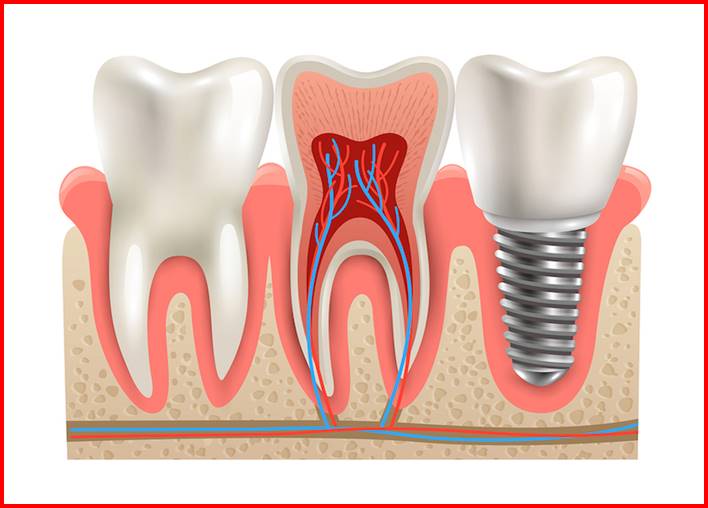Restorative Dentistry for Missing Teeth
There are circumstances in one’s life that they have to get teeth replacement as it is the last resort they could do to get their smile back, this procedure is referred to as restorative dentistry. Be familiar with how the process works, especially if you need it. Restorative dentistry in Phoenix from BellaVista DentalCare can guide you with the procedure your teeth need.
If you find yourself in need of restorative dentistry, it is crucial to consult an experienced dentist in pasadena ca who can skillfully guide you through the process, ensuring the best possible outcome for restoring your smile and oral health. Their expertise and knowledge will be instrumental in providing you with the necessary care and personalized solutions for your dental needs
Dental Implants in Restorative Dentistry
Oral Health Role
- Restorative dentistry plays a crucial part in maintaining oral health. It goes beyond just fixing teeth for aesthetic reasons. When you lose a tooth, it’s not just about the gap that’s left behind. The absence affects how you chew and can lead to other teeth shifting out of place.
- Restorative dentistry’s role is to restore your dental health to its optimal state. This includes repairing damaged teeth or replacing missing ones. By doing so, it ensures your mouth functions properly and remains healthy.
Impact on Dental Health
- Missing teeth do more than alter your smile; they significantly impact your overall dental health. Without all your teeth, chewing becomes harder. This can cause digestion issues since it starts in the mouth.
- Gaps from missing teeth can lead to remaining teeth moving into the wrong positions. Such shifts create hard-to-clean spaces, increasing the risk of gum disease and tooth decay.
Replacement Necessity
Replacing missing teeth is essential for both cosmetic and functional reasons. Options include:
- Dental implants: These act like natural tooth roots.
- Bridges: They fill gaps by anchoring onto neighboring teeth.
- Dentures: These are removable appliances that replace multiple missing teeth.
Dental Bridges for Tooth Replacement
Dental Bridges vs. Dental Implants: Making the Right Choice
- Dental bridges and implants offer solutions to missing teeth. However, their procedures differ greatly.
- Bridges involve preparing adjacent teeth for crowns that support the bridge. This process can take a few weeks. It’s less invasive than implant surgery.
- Implants require inserting a titanium post into the jawbone, which takes several months to integrate fully with bone tissue. This option is more complex but offers longer-term benefits.
Cost-Effectiveness
- Evaluating cost over time is crucial in choosing between bridges and implants.
- Initially, dental bridges were less expensive than implants. They might seem like an economical choice for some people.
- However, considering longevity, dental implants often prove more cost-effective. They can last a lifetime with proper care, unlike bridges which may need replacement every 5 to 15 years.
Candidacy Requirements
Not everyone is a candidate for both options.
For dental bridges:
- A person needs healthy teeth on either side of the gap.
- Gum health is also important for supporting these structures.
For dental implants:
- Adequate jawbone density is required.
- Good overall health is necessary since surgery involves healing time.
Implant-Supported Dentures
Traditional vs. Implant
- Traditional dentures often pose challenges for patients. They might slip or cause discomfort. Also, they require frequent adjustments to maintain a proper fit.
- Implant-supported dentures offer a solution. They are anchored into the jawbone, providing unmatched stability and comfort. This means no slipping and less irritation for the tissues in your mouth.
Functionality Boost
- Patients experience improved functionality with implant-supported dentures. Eating and speaking become easier compared to traditional options.
- The secure fit also contributes to better oral health by maintaining bone structure and reducing tissue damage over time.
Long-Term Benefits
- One of the main advantages is the reduced need for adjustments. Unlike traditional dentures that may lose their fit as your mouth’s structure changes, these remain stable.
- This stability not only enhances comfort but also saves trips to the dentist’s office for adjustments, making them cost-effective in the long run.
Mini Implants for Tooth Replacement
Smaller Size
- Mini implants stand out due to their smaller size. This makes the procedure less invasive. The process involves fewer disruptions to soft tissue and blood vessels. Patients experience less discomfort during and after the procedure.
- The smaller size benefits those with limited bone density. It’s a key factor for successful implantation without extensive surgeries.
Ideal Scenarios
- Mini implants are not for everyone. They’re best suited for stabilizing lower dentures or where space is tight. Here are some scenarios where mini implants shine:
- Individuals with low bone density.
- Patients seeking a less invasive option.
- Those needing quick stabilization of dental prosthetics.
- These situations highlight the versatility of mini implants in restorative dentistry for missing teeth.
Quicker Recovery
- Recovery times with mini implants are notably shorter than standard options. This is because the procedure is less traumatic to soft tissue and surrounding areas.
- Patients can often return to normal activities sooner, making it a convenient choice for many.
It is wise to know what restorative dentistry procedures are; in this way, you can be on the same page as your dentist when you visit them. If you think you need it don’t delay your appointment. Call the best dentist in your area and book a visit as soon as possible.
Back on Track: 5 Tips for Getting Back into Working Out
Restorative Dentistry for Missing Teeth
